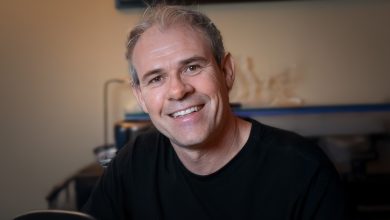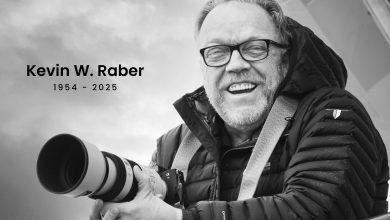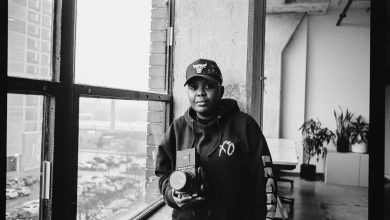TWiP #150 – When is Small Big Enough?
This week: Sensors – when is small, big enough? Google TV – should photographers care? And guest host Derrick Story joins in the fray!
Hosts: Frederick Van Johnson, Derrick Story, Steve Simon, and Ron Brinkmann
NEWS & DISCUSSION
Sony Announces a Large Sensor Small Camera
Sony announces a small camera with a large sensor and interchangeable lenses. Ron thinks they come up with some very interesting technology but then they go with proprietary features which makes it hard to buy into their products.
DxO Labs Suggests Shortcomings of Adobe's Lens Profile Creator
Adobe's image processing rival DxO Labs has highlighted potential pitfalls in allowing users to profile their own lenses using Adobe's recently announced Lens Profile Creator utility. Derrick thinks that for most photographers, this feature might help with their workflow when it comes to vignetting but much like color profiles, it might not be necessary. Download the Adobe Lens profiles or visit DxO Labs to view their tools for lens correction.
Sony Announces Internet TV on Google TV Platform
This week Sony announced Sony Internet TV, the world's first TV based on the new Google TV platform. Google TV combines the familiar TV with the freedom and power of the web. You can access all your favorite websites and move between the television and the web. The guys discuss what this might mean for photographers and whether they will be getting their images ready for Google TV.
LISTENER QUESTIONS
Question #1: From Cedric Bullock: I've been having trouble setting my Nikon D300s to capture clear images of my kids' sports games (daytime – mostly sunny.) I am using the Nikon 70-200/f2.8 VR lens, but I often get blurred images or out of focus shots. I also want to capture the ball (tennis, soccer and baseball) in the frame as it is being struck. More often than not, the child is clear but the ball is not. Any suggestions?
Steve: Photography is all about compromise. I think that if the main subject is your child and they are sharp and in focus, then I don't think that it's a big problem if the ball is out of focus. As for blurred images, a few tips I can give are to keep your autofocus on continuous mode and set the focus points to 21 points or 9 points. The other area to look at is the focus tracking lock arm. Lock it to long so that if someone runs in between you and your child, then it will the keep the focus on your child rather than refocusing on the closer subject.
Question #2: Paul Prior asks: I'm relatively new to the legal side of photography and have taken some hot rod car show photos which I would like to sell. If it is a public show and I ask the car owner if I can take a photo and he agrees, can I later sell that photo?
Derrick: While I'm not a lawyer, the key world here is sell. The minute you try to get money for your photos you should get some sort of a release or agreement for this property. Steve adds that you can sell it in an editorial way if it was from a public show but if you tried to sell it for advertising purposes without the proper releases, that is when you can get into a world of trouble.
Question #3: Scott Ryan asks: Processing and photo management tools such as Lightroom, Aperture & CS5 are incredibly expensive. Using Open Source utilities such as Gimp & Digikam, might be a good financial fit, especially for those of us who are not using photography as a source of income. These utilities may not be as user friendly as their closed source counterparts, but the money saved could be spent on equipment and/or photo expeditions. What are your thoughts on Open Source photo utilities?
Ron thinks these are great alternatives but there are tradeoffs. When getting started you have to decide what your budget is and what your passion is when it comes to this stuff and then decide where you want to spend your money. Fred asks Ron for his opinion on web based services like PicNik. Ron thinks that with the large file sizes of photos today, the online solutions might not be the best solutions for larger volumes of photos. Steve thinks that Aperture and Lightroom are great tools which aren't actually that expensive compared to CS5. Fred also thinks that the up front cost of Lightroom or Aperture isn't that much if you spread it out over 2-3 years considering the advantages that both programs offer.
PICKS OF THE WEEK
Ron: http://www.openmoco.org/ – make your own motion control rigs for time lapse photography
Steve: Sticky Filters – stick-on filters for your flashes
Frederick: http://www.StuckinCustoms.com/
Derrick: iPad Camera Connector Kit
WRAP UP
This episode is brought to you by SquareSpace.com. The fast and easy way to publish a high quality web site or blog. For a free trial and 10% off your new account go to www.squarespace.com and enter the coupon code: twip.
Visit the Flickr critique group. You can also join our Facebook group.
Ron Brinkmann – www.digitalcomposting.com or www.twitter.com/ronbrinkmann
Steve Simon – www.stevesimonphoto.com or www.twitter.com/stevesimon
Derrick Story – www.thedigitalstory.com or www.twitter.com/derrick_story
Frederick Van Johnson – www.frederickvan.com or www.twitter.com/frederickvan
Show notes by Bruce Clarke at www.momentsindigital.com or www.twitter.com/bruceclarke
Bandwidth provided by Cachefly. Intro Music by Scott Cannizzaro






